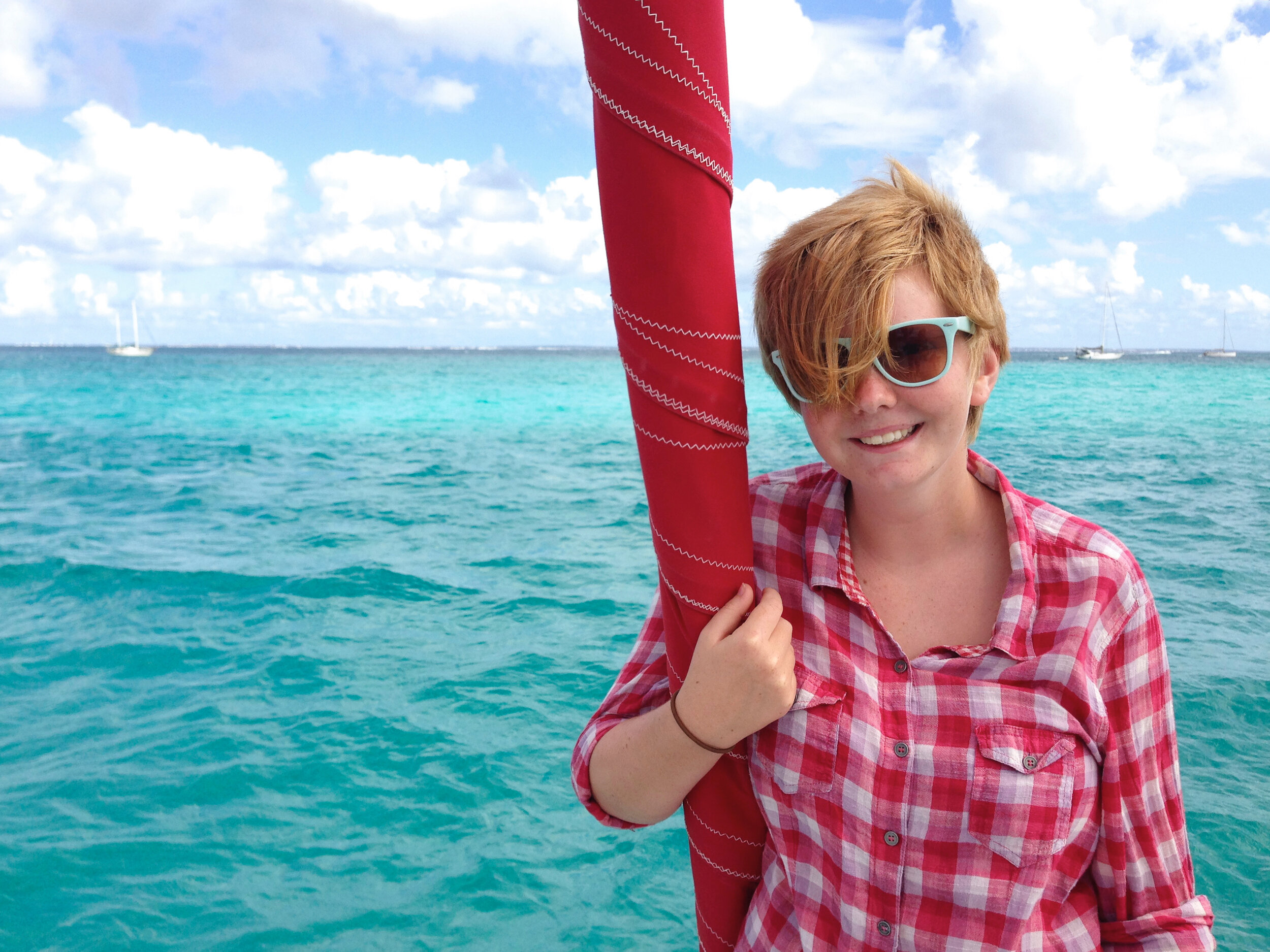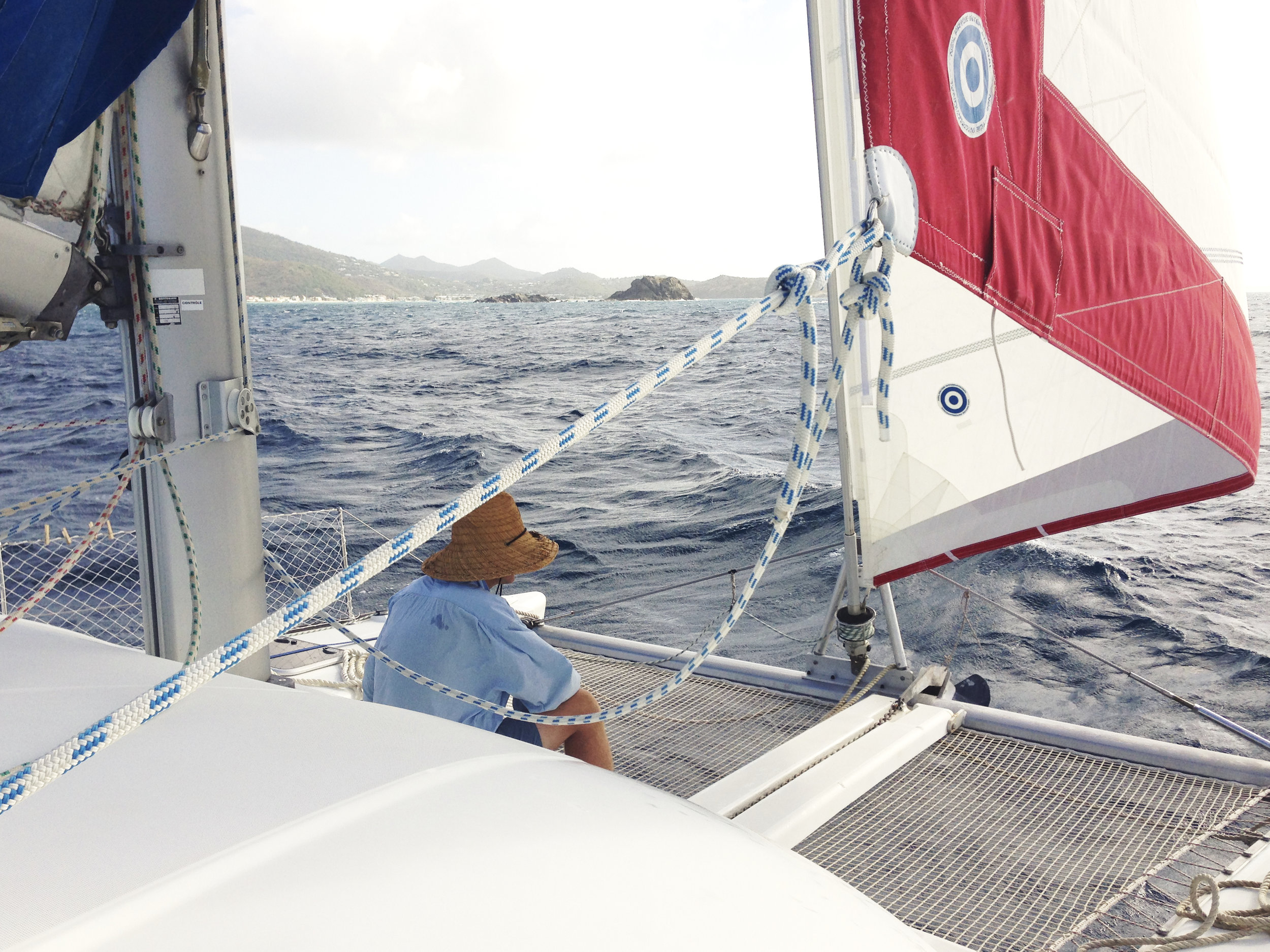Trust Your Compass - 6 of 7 - Dreaming with Discipline
/by ERIK ORTON
Approaching Marigot Bay, St. Martin. Photo: Ty LaMont Mecham
We were sailing north between a Dutch island called Saba and the French side of St. Martin. We’d finished our ‘shakedown’ cruise where we’d taken Fezywig out to a few nearby islands to test drive all the upgrades and changes we’d made. We’d shaken a few things loose and needed to make a few tweaks when we got back to St. Martin, but in general the boat was running well.
We were sailing with two other boats, Discovery and Day Dreamer. We’d gotten an early start that morning and the wind was good so we were leading the group. We were all making for the same point on the west edge of St. Martin after which we would turn northeast into Marigot Bay and anchor near each other. I was using autopilot to navigate us toward the point. We were making steady progress and the other boats were catching up. Their boats were longer and therefore faster. I looked at St. Martin in the distance and it didn’t look right. It looked like we were going to cut the turn too close. I bumped the autopilot ten degrees to the west and then another five degrees, so fifteen total. That would give us enough room to round the point without running into any rocks.
Marigot Bay, St. Martin. Photo: Ty LaMont Mecham
The other boats caught up and we all waved as we sailed in formation, the trade winds carrying us comfortably forward. As Discoveryand Day Dreamer proceeded to pass us it looked like were spreading further and further apart. I started to worry they were going to hit the rocks up ahead but there was plenty of distance between our current position and the rocks. We continued to spread out with them edging closer to the point and us moving out and around it. We sailed for a few hours before the point was imminent. I bumped the autopilot back fifteen degrees to the east and tightened up the distance between us and the point. I’d gone too far out to sea.
Despite being the first boat underway in the morning, we were the last one in at anchor in the evening. Once we were all anchored and situated John, the captain of Discovery, asked me, “I saw you change course. What happened?”
“It looked like we were going to cut it too close,” I told him.
“What do you mean?”
“When I looked out over the horizon it looked like we were headed straight at the coast instead of around the point.”
“Yeah, that can be tricky to see with your eye. Trust your compass,” he said.
From many miles out, it had looked like we were going to run into the coast. I’d marked our destination in my chart, calculated the heading and set the autopilot on that course. But as we made headway, I started to second guess myself. Maybe my calculations were wrong. Maybe we were drifting because of some current I couldn’t perceive. I just knew I didn’t want to run into that coastline. In this case the only draw back was that we got in later than the others because I’d sailed a longer course to our destination. I’d made a change that was leaned on the side of prudence, but the point sunk in with me: trust your compass.
Karina taking a bearing with a handheld compass.
Learning to navigate on paper.
I realized how easily I second guessed myself. It was easy to psych myself out. I was a relatively inexperienced captain. I knew how to navigate, but was getting used to sailing longer distances. My confidence was still emerging.
I see this all the time when I help my son with his math. He’ll solve the problem, arrive at the correct answer and look at me to see if it’s right before he enters it into the space for the final answer. We all want confirmation and validation. Even when we’re right, we worry. We second guess ourselves.
Of course there are times when your eyeballs will tell you the truth about what’s happening. But for things distant and far away, I’ve learned the importance of trusting my compass. I’ve found it easy for my current short-sighted perspective to make me feel like my larger long-term perspective was off. I adjust and actually take myself away from my true destination. With experience, I’ve come to trust my math, trust I got the answer right and trust my compass. How we each come to our decisions to do what we do is very personal, but once you have a conviction of it, trust it. Don’t be easily dissuaded. Don’t be blind to the obvious, but do stick to your guns. Stay your course.
Eli at a cross roads.
Eli sticking to his guns.
Week 1 – Choose Your Own Island
Week 2 – Chart Your Course
Week 3 - Cast Off
Week 4 - Navigating Out of the Harbor
Week 5 - Set Your Autopilot

































